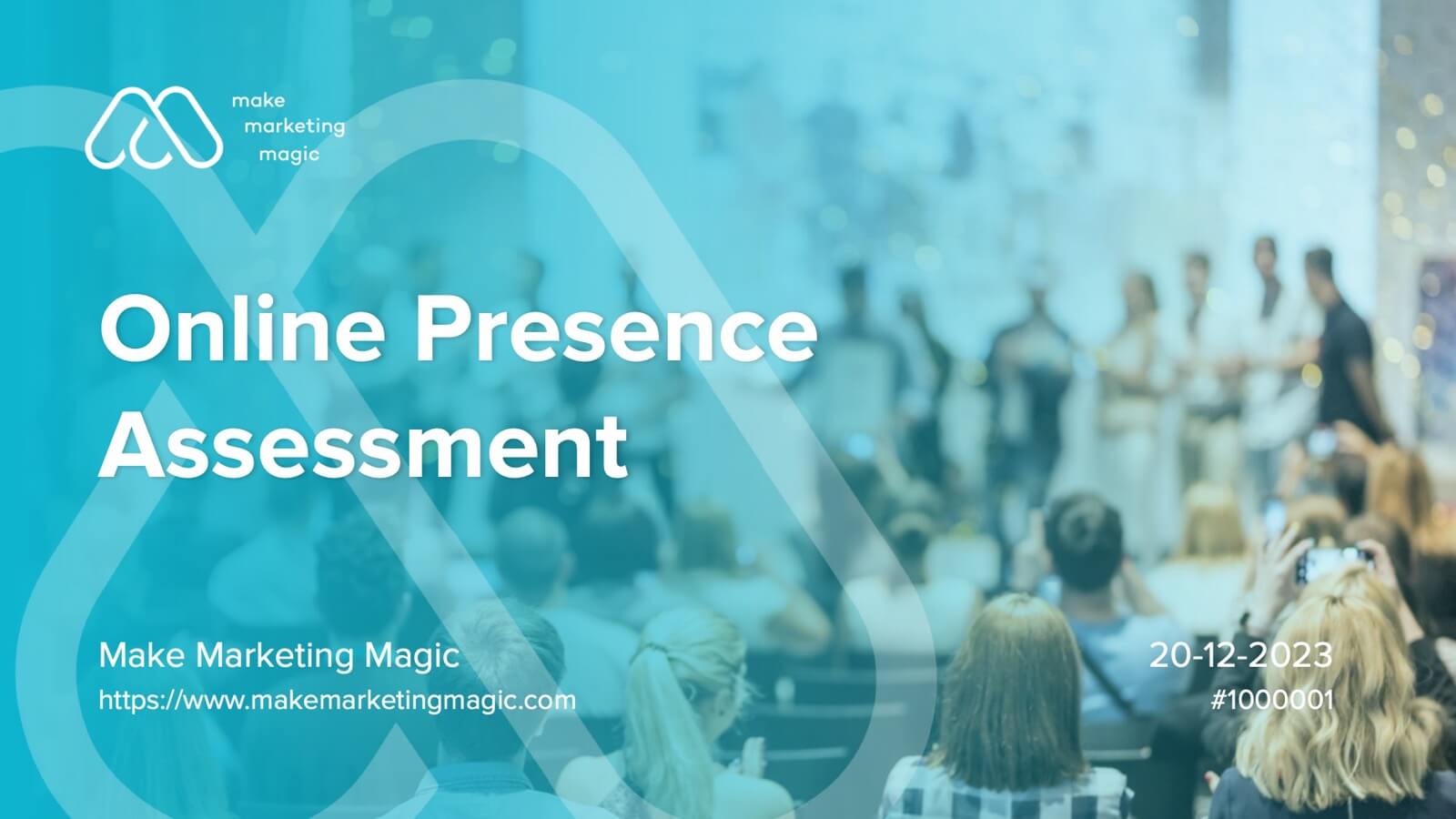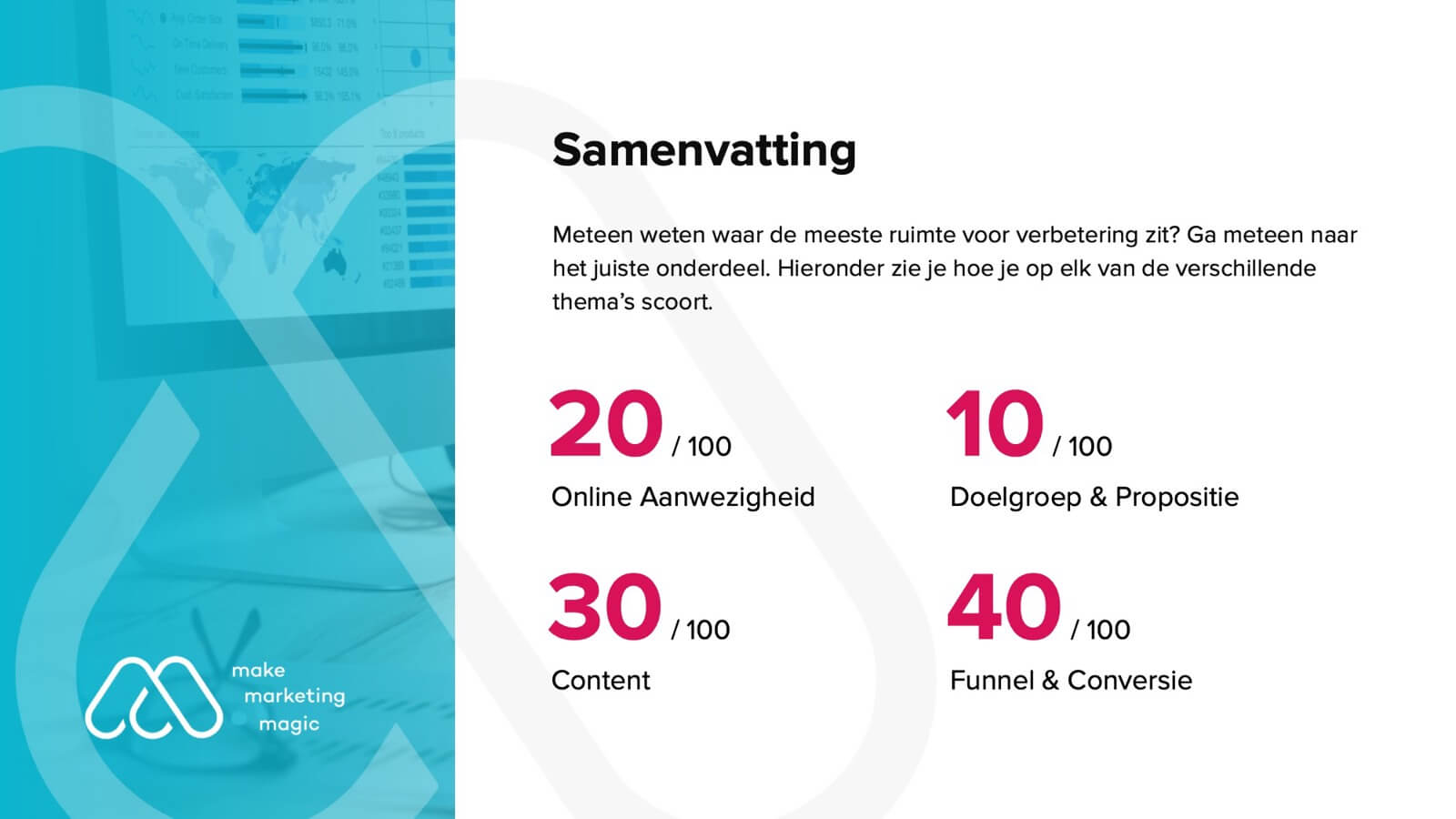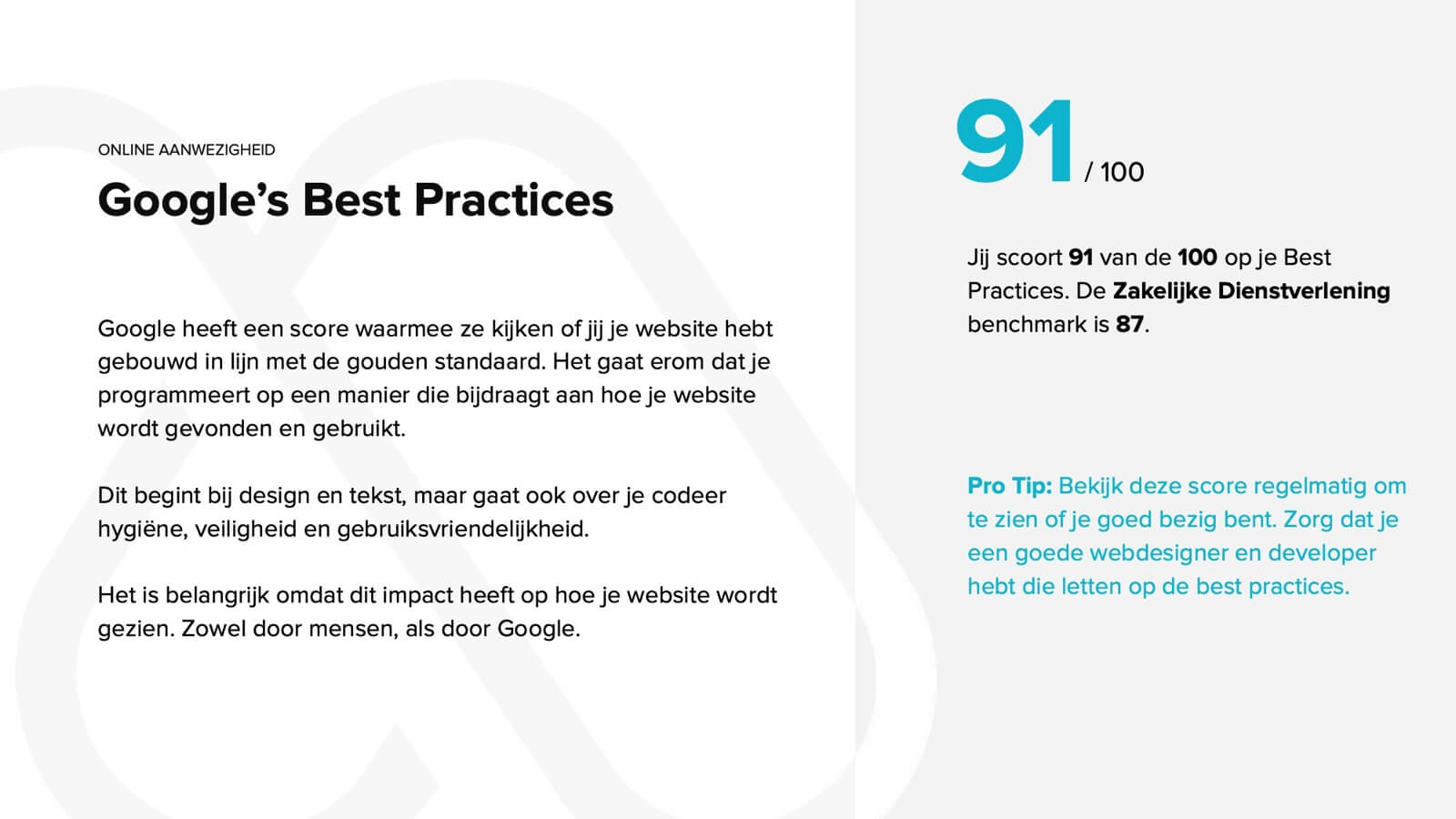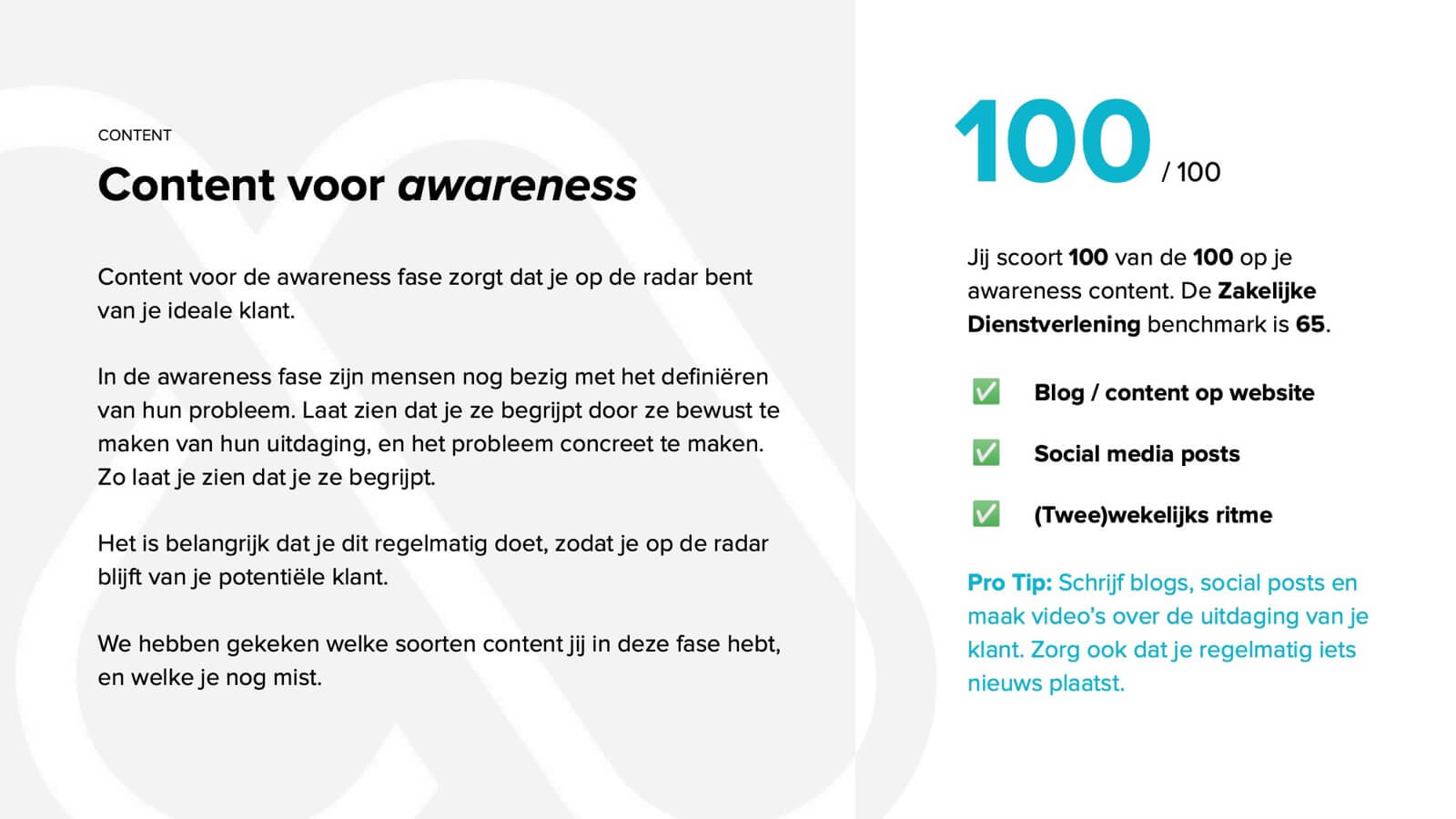
How to improve your online visibility and grow your business
Door Make Marketing Magic op 9 augustus 2021.
The importance of being visible to your target group online is growing by the day. At some companies this works a lot better than at others.
Of course, that doesn’t always say anything about the quality of your product or service, but it can help you to grow.
We have researched hundreds of companies in the past 12 months and here we share our top six learnings.
Some companies grow very fast, others grow slower. If we look at all the entrepreneurs that we serve, we see that the “slowcoaches” mainly get their customers from their existing network, especially from the owner’s network and through word of mouth.
Fast-growing companies
The fast-growing companies get a lot of turnover from their digital channels. At the same time, we see that there are very few companies that are really successful in this.
Yes, a lot of time, energy, resources and money is spent maintaining those online channels, but if it doesn’t pay off, where does it go wrong?
To find out, we looked for a scan with which we can go deeper. Unfortunately, the existing tools are incomplete, they often only focus on the technology, and the outcome of such a scan is mainly aimed at selling you something.
Then we thought: let’s build something ourselves! We’ve mixed tools like Google Lighthouse with Google Keyword Planner and the advanced SEO tool Semrush, adding a hefty pinch of our own human intelligence.
With the scan – the Online Presence Assessment – that we have developed in this way, we check two hundred data points that influence your online success and give you a clear insight into your position in the current market.
And perhaps more importantly, we also make concrete recommendations that you can build on.
Six most important learnings
The concrete recommendations are different for every company, that is precisely the strength of our scan.
But after screening and benchmarking about five hundred companies, we can of course also share some general learnings, which benefit everyone immediately.
The big six.
1. Make your distinctiveness real
Everyone is aware of the fact that it is important to share the distinctive character of your company on your website. We see this on almost all websites. But what does that mean in concrete terms for your customer?
It often leaves a lot to be desired. Do you put your customer first? Fine. But how does that help your customer? Make sure that is immediately clear.
2. Communicate in an unambiguous way
At many companies we see a discrepancy in how the target group is addressed on the website and how it is communicated via social media channels. And that while you really only communicate with one target group – if you try to address multiple target groups, then it is really time to make a choice.
Make sure you address your target group in an unambiguous way, through all channels.
3. Check the loading speed of your website
How fast your website loads determines the engagement level of your potential customer. The faster your site loads, the more likely someone will stay on your website longer and visit multiple pages.
In addition, loading speed is one of the most important factors in the Google algorithm, which makes fast loading websites rank higher in Google than slow loading websites.
4. Strategically place your calls-to-actions – and make sure there are plenty of them
It’s nice for people to visit your website, but ultimately you want them to do something. They need a call to action: “Request more information”, “download a white paper” or “contact us” are good ones.
The buttons on your website that entice people to take action – the so-called call-to-actions – are crucial in this regard.
Many websites have too few of those buttons and we almost never find them in strategic places where a lot of traffic comes or where many people leave the website. They are often hidden away in a place where hardly anyone sees them, let alone clicks on them.
5. Get the right keyword combinations
One of the things we check is what are the top five keyword combinations are that lead to traffic to the website.
These are almost never keywords that are relevant to the products and services offered on the website. With Google Keyword Planner, you can look up which keyword combinations are relevant to you.
If those search volumes are below 2,500, you don’t need to factor that into your keyword strategy. If the search volumes are higher, make sure that those keyword combinations are part of, for example, your blog posts.
6. Connect with your customer’s purchasing journey
You want to appeal to your buyer persona with the content on your website. It goes through a number of phases in the purchasing process and your content must be relevant in each of those phases. Whether you use Google’s See, Think, Do, Care model or awareness, consideration and purchase as steps in your customer journey, make sure you’re relevant.
The first phase – awareness – concerns blogs and other content that you also share on your social media channels. The second phase involves more product-oriented content, such as a long read.
Finally, if your visitor wants to make a purchase, you must of course ensure that clear calls-to-action can be found in strategic places on your website.
Which brings me back to point 4. If you don’t connect with your customer’s purchasing journey, his or her journey will never end with you. And that is an eternal sin.
Curious about how you score with your online visibility?
Our customers are thrilled with our Online Presence Assessments, because it’s super-relevant to their business. Every page, every graph and every score is about your business. The above points are useful, but are not just about you.
Interested in a really relevant assessment? Feel free to schedule a meeting with us to discuss your next steps.













